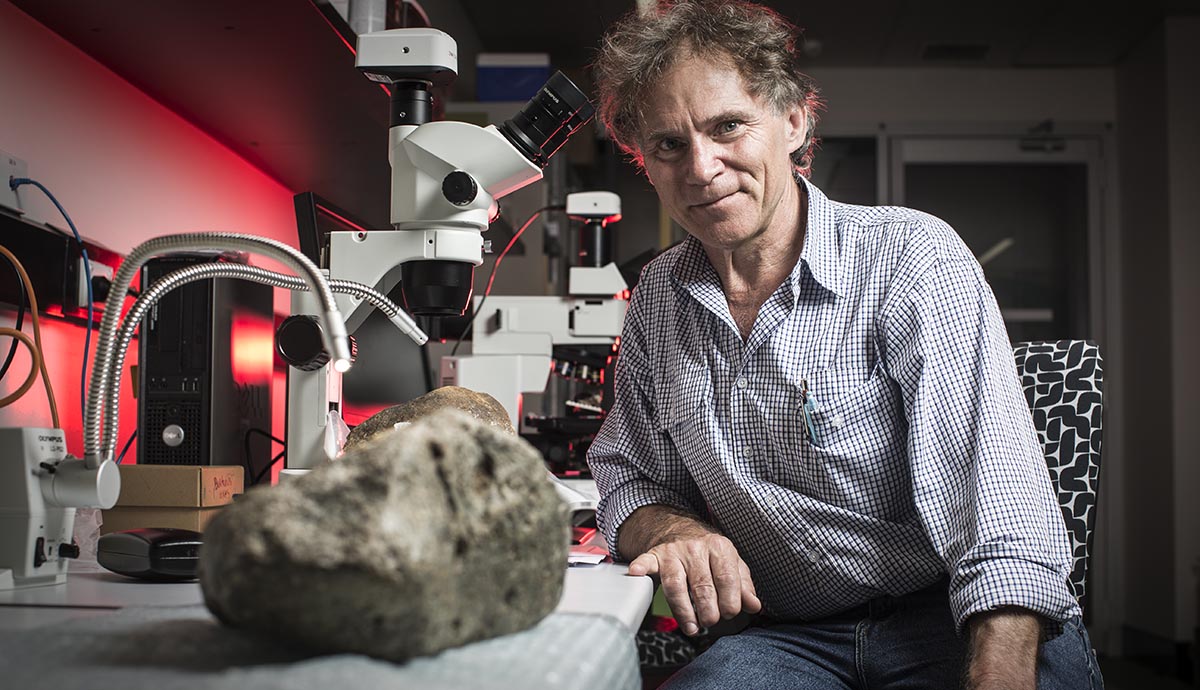April 27, 2017
San Diego mastodon discovery rewrites the story of humans in North America
Evidence shows hominins in the New World 130,000 years ago
Evidence from an archaeological site in San Diego, California, has dramatically shaken up our understanding of when early humans arrived in North America.
The site contained 130,000-year-old bones and teeth of a mastodon showing evidence of modification by early humans. The find pushes back the record of early humans on the New World by more than 100,000 years, according to a paper published in the 27 April issue of the prestigious science journal Nature.
The fossil remains were discovered during routine palaeontological mitigation work at a freeway expansion project site in 1992. The bones, tusks, and molars, many of which are sharply broken, were found deeply buried alongside large stones that appeared to have been used as hammers and anvils, making this the oldest in situ, well-documented archaeological site in the Americas.
Until recently, the oldest records of human sites in North America generally accepted by archaeologists were about 15,000 years old. But the fossils from the Cerutti Mastodon site (as the site is being referred to in recognition of San Diego Natural History Museum field palaeontologist Richard Cerutti who discovered the site and led the excavation), were found embedded in fine-grained sediments that had been deposited much earlier, during a period long before humans were thought to have arrived on the continent.
University of Wollongong archaeologist Professor Richard Fullagar joined the team studying the Cerutti Mastodon site in 2015, brought in for his expertise in impact and wear marks on stone tools.
“The significance of the site really has to do with its age because it puts humans in North America a long time earlier than just about anyone in the scientific establishment had thought possible,” Professor Fullagar said, adding that, “the findings themselves are also extremely interesting”.
Professor Fullagar said the evidence that the mastodon bones and teeth were broken by tool-wielding hominins, rather than by the gnawing of carnivores or by a geological event such as a rock fall, lay in the way they were broken, in the organisation of the broken bones, and in the wear traces on hammers and anvils used to smash up the bones.
“We think what they were doing was using stone hammers and anvils to smash up the bones to extract the marrow and maybe to make bone tools. There's a long record of that kind of thing with human exploitation of large animals in other parts of the world,” he said.
“When I started looking I had no idea of the age of the stones and thought they could be hammers or pounding stones. I've been interested in looking at grinding and pounding stones for many years and when I saw a couple of the stones from this site I thought they really looked like grinding and pounding stones I've seen in other parts of the world.”
At the site, the stones and bones were concentrated in two separate clusters, each around a large stone that could have been used as an anvil.
“There are two anvils, one in the centre of each of these concentrations, and there are another three large stones that we think are hammers. The other amazing thing is that for one of these hammers, there are four or five bits of stone - found among the concentrations of bones and smashed up bits of stone - that can be refitted to that hammer. So clearly the stones were involved in the breaking up of the bones.”
When Professor Fullagar examined the stones under a microscope the fractures and impact damage – scratch marks, worn surfaces, abrasion, the patches of polish – were consistent with the type of wear seen experimentally from stone striking on bone and stone.
While the research team examined several alternative theories to explain how the bones, teeth and stones came to be broken and scattered in the way they were, the overwhelming evidence points to early humans being involved
“When I look at the whole assemblage of material it begins to make sense and that's really the only explanation for how it got there,” Professor Fullagar said.
A 130,000-year-old archaeological site in southern California, U.S.A. by Steven R. Holen, Thomas A. Deméré, Daniel C. Fisher, Richard Fullagar, James B. Paces, George T. Jefferson, Jared M. Beeton, Richard A. Cerutti, Adam N. Rountrey, Lawrence Vescera, and Kathleen A. Holen is published in the April 27 issue of Nature.
